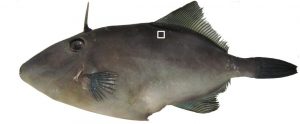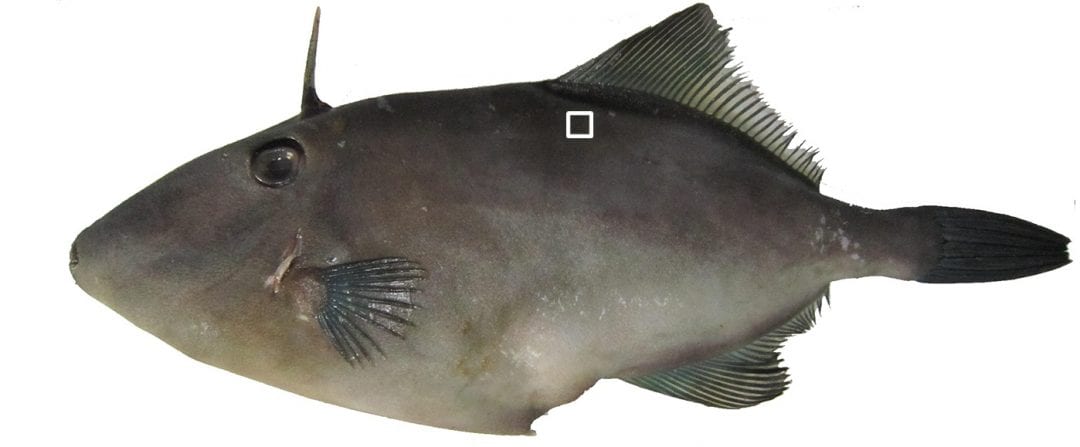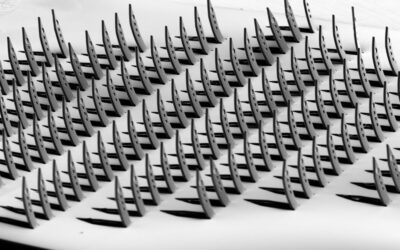 The skin of the humble filefish Navodon septentrionalis has been shown to have remarkable wetting properties, including the ability to self-clean oil droplets from its body.
The skin of the humble filefish Navodon septentrionalis has been shown to have remarkable wetting properties, including the ability to self-clean oil droplets from its body.
The skin, described as being more like sandpaper than scales by these authors at the Chinese Academy of Sciences, is oleophobic, meaning that it repels oils. More importantly, it repels them in a directional manner, from the head to the tail of the fish. This anisotropic wettability not only means that the filefish can avoid contamination when swimming through oil spills, but it also provides an ideal model for self-cleaning surfaces.
Rows of hook-like spines approximately 384 micrometers high and 100 micrometers apart point toward the tail of the fish, generating the directionality and also trapping water droplets against the skin, helping to create oil contact angles of about 156 degrees. Further, the skin structure causes an oil droplet being pressed against it to be pinned rather than advancing in a tail-to-head direction.
 Using soft lithography, this skin structure could be templated onto polydimethylsiloxane, allowing the creation of artificial surfaces with the same properties as the skin.
Using soft lithography, this skin structure could be templated onto polydimethylsiloxane, allowing the creation of artificial surfaces with the same properties as the skin.
These discoveries allow the exploration of these surface features not only for the inexpensive manufacturing of self-cleaning surfaces but also for controlled oil collection and transportation, water/oil separation technologies, and for the creation of oil-repellant coatings.

















